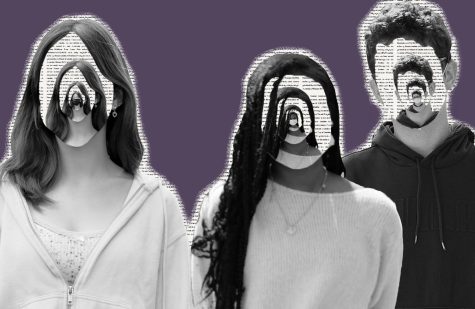West Side Story: A stereotype, not a storyline
In Steven Spielberg’s venture into movie musical adaptations with West Side Story, released in 2021, he pays homage to the original 1957 Broadway musical. From the use of rugged New York, beautiful cinematography, and gifted actors, Spielberg takes the theatricality the original lacked and transforms the movie into a mesmerizing display of clashing cultures. Nonetheless, the impressive visuals do not disguise the ingenuine portrayal of Puerto Ricans, a flaw the movie fails to solve from its predecessors.
West Side Story is a contemporary adaptation of Shakespeare’s Romeo and Juliet. Set in New York in the 1950s, two star-crossed lovers, Tony and Maria, face the consequences of their forbidden love. Meanwhile, the Sharks and Jets gangs emerge as the newly immigrated Puerto Rican and white New Yorkers clash in the upper west side of New York. Tony, a Jet, yearns to start anew after being incarcerated for nearly killing a rival gangster. Maria, sister to the leader of the Sharks, longs for independence after immigrating from Puerto Rico.

In the recent adaptation of West Side Story, Spielberg deserves all the accolades. His cinematographic choices immerses the audience in the energetic atmosphere, with the camera shots never missing a beat throughout the intricate dance sequences, encouraging the audience to dance along.
Despite the electrifying energy the movie brings, the film fails to address the foundation of the racist Puerto Rican representation it’s built upon. First a broadway musical, writers were inspired by the increasing gang activity in New York due to conflict between Puerto Rican immigrants and white communities. Without consulting the Puerto Rican community while writing the screenplay, lyrics like “Puerto Rico. You ugly island . . .Island of tropic diseases,” were allowed. The musical’s problem lies in the original sourcing, with the inaccurate facts and wrongful interpretation of assimilation into America. The Puerto Rican characters in the movie glorify America and shame their home country. This wasn’t the attitude carried, as many Puerto Ricans in the 50s immigrated for better economic opportunities. Additionally, In the 1961 adaptation, Rita Moreno, was the only Latina in the whole movie, as all the Puerto Rican character leads were played by white actors with overexaggerated accents. Moreover, Moreno stated in an interview for USA Today that makeup artists made her and her white co-stars skin darker than their own. Despite this racist portrayal, West Side Story won ten Oscars in 1962.
During the development of the script of the 2021 adaptation, Spielberg vowed to change the racist portrayal of Puerto Ricans. In 2019 he held a meeting at the University of Puerto Rico for input. Students felt it was unnecessary to remake West Side Story, as the concept came from observations, resulting in racist stereotypes being made about Puerto Ricans. Isel Rodriguez, a professor at the University of Puerto Rico voiced her concern for Spielberg’s solutions. “I don’t know if they’ll be able to fix the problem with just Latino actors and good accents,” she said. Still, Spielberg continued on the project with his goal of authenticity.
He fell short on his goal.
Throughout the movie, there are 30 Puerto Rican characters, and in the 2021 adaptation, 20 of them were played by actors of Puerto Rican descent. Although all other Puerto Rican characters are played by talented Latinx actors, the lack of genuine representation repeats the mistakes of the originals. The two main Puerto Rican characters, Maria (Rachel Zegler) and Bernardo (David Alvarez), were played by non-Puerto Ricans. As talented as Zegler and Alvarez are, why couldn’t Spielberg cast Puerto Rican actors as leads if he wanted to make the movie authentic? Furthermore, all Latinx and Puerto Rican actors were taught how to do a Puerto Rican accent. To viewers, the accents were overexaggerated and distracting in many scenes, a repeated mistake.

Though Spielberg had good intentions to save West Side Story, the narrative has passed its expiration date. While the songs remained engraved in my head until now, it does not change the fact the movie could’ve been executed in a way that truly reflected Puerto Rican culture. While it was an honest attempt, Hollywood should avoid portraying cultures that aren’t their own.


When Aaliyah isn't working in the journ room, she's usually running around the school, balancing the other six clubs she's involved in. Outside of school she constantly keeps herself busy, overindulging in teen dramas from the early 2000's. She's most like Summer Roberts from The O.C., but thinks she's a Rory Gilmore.








